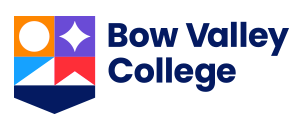Phases
Project Description
The primary objective of the Language for Work course is to help internationally educated learners develop Intercultural Communicative Competence (ICC) - the combination of awareness, knowledge and skill needed to interact effectively and appropriately within a cultural context different from one’s own. Content in the course was guided by industry suggestions, incorporated language and contexts directly relating to the employment setting, and prepared learners for communication situations in the Canadian workplace.
Other objectives of this project included:
- Creating increased capacity for online ELL delivery within Alberta
- Integrating guiding principles in online ELL programming in a blended learning model
- Building language learners employability, employment and language skills
- Developing and piloting three blended ELL workplace focused courses at CLB levels 5 to 7.
Project Development
Phase I: Environmental Scan and Course Development
February 2011 – November 2011
The first phase of the project involved a needs assessment to inform course content. The project team collected feedback from employers, ELL instructors and intercultural communication specialists. Employers and employment facilitators completed an electronic survey. Their responses were complied and formed the basis of a mini-DACUM analysis. ELL instructors and intercultural communication specialists participated in the mini-DACUM, which identified the areas of focus for curriculum consideration. These stakeholders formed an advisory group that was available for consultation throughout the project.
Upon completion of the environmental scan, the course development process began. The development of Language for Work required the collaborative effort of a project team consisting of program coordinators, subject matter experts (language and culture), an instructional designer, an e-learning developer, a graphic designer and a technical editor.
Course Pilots
Phase II: Course Delivery
September 2011 – March 2012
Language for Work, a blended course, is designed to assist learners at Canadian Language Benchmark (CLB) levels 5 through 7 to navigate the cultural and language norms that affect communication in the Canadian workplace. The course consists of five modules:
- The first module is an introduction to culture and its role in this course. It also includes an introduction to D2L, the learning management system that activities are delivered through.
- The next three modules each focus on a different aspect of communication in the workplace: clarifying and confirming information in the workplace, understanding politeness strategies in the workplace, and navigating conflict in the workplace
- The last module is comprised of two units that summarize course materials and include case studies, review and reflection.
Phase II activities involved the pilots of this course, including:
- The delivery of the first pilot (CLB 5) face-to-face at Bow Valley College.
- The delivery of the second pilot (CLB 7) through videoconferencing in partnership with Red Deer College.
- The delivery of the third pilot (CLB 6) face-to-face at Bow Valley College.
During each of the pilots, feedback was provided to the development team. At the end of each pilot, learners completed a questionnaire related to course content. Instructors provided written feedback on the materials and delivery mode. All feedback was taken into consideration to determine the revisions made after each pilot. Upon completion of the third pilot, the program materials were edited once again to ensure consistency.
“That was first experience for me when I study how to work not from the perspective of a profession, but from the communication’s perspective. I feel like I am turned on 180 degrees and can see what is behind my back – I have never seen it before!” - Language for Work learner
Course Pilots
Language for Work was a successful project. It demonstrated that if considerations for English language learners are put at the forefront of course development and guiding principles in online ESL programming are adhered to, language instruction can be delivered effectively through a blended learning environment. Further, the project validated the importance of including ICC in language and workplace programs.
Project recommendations included:
- Development Considerations include time, financial resources, human resources and institutional capacity.
The development of Language for Work was a one year undertaking that required extensive resources, time and expertise. Technical resources, online support services, administration support and human resources including subject matter experts, instructional designers, graphic designers, a project lead, online material developers and technical editors were necessary to ensure an effective learning experience. The online content developers required knowledge of the software as well as skills in graphic design.
- Blended learning course development requires a clearly defined project plan, established roles and effective communication strategies.
The process of developing a blended learning course involves a team of people and therefore also requires a very clearly laid out process piece and effective communication to ensure coordination among subject matter experts, designers and developers. Often, development of face-to-face course content and multimedia components are taking place concurrently. Course development should follow a project plan, roles should be delegated clearly and an online model should be available for referral.
- Teaching English language skills and ICC through a blended learning environment is effective.
A balance between face-to-face learning and online learning affords learners time to interact, practice and reflect on their learning. It provides opportunities for learners to interact with the content of the course, with each other, with the instructor and with the class as a whole. The two learning modes support each other and benefit the learners by addressing different learning styles. For example, the online activities allow learners to negotiate content at their own pace and to review materials on multiple occasions. The face-to-face allow for discussion and more spontaneous interaction. We recommend that more courses for English language learners at Stage Two of the Canadian Language Benchmarks be offered through a blended learning environment.
- Intercultural Communicative Competence should be integrated into ELL programs.
The content in Language for Work presents language with a focus on culture and how it affects communication. Language for Work fills a gap in current program offerings. Utilizing a scenario-based approach proved to be an effective way to visually represent interactions in the workplace. Feedback from both learners and employers reinforced the value of integrating ICC with language.


